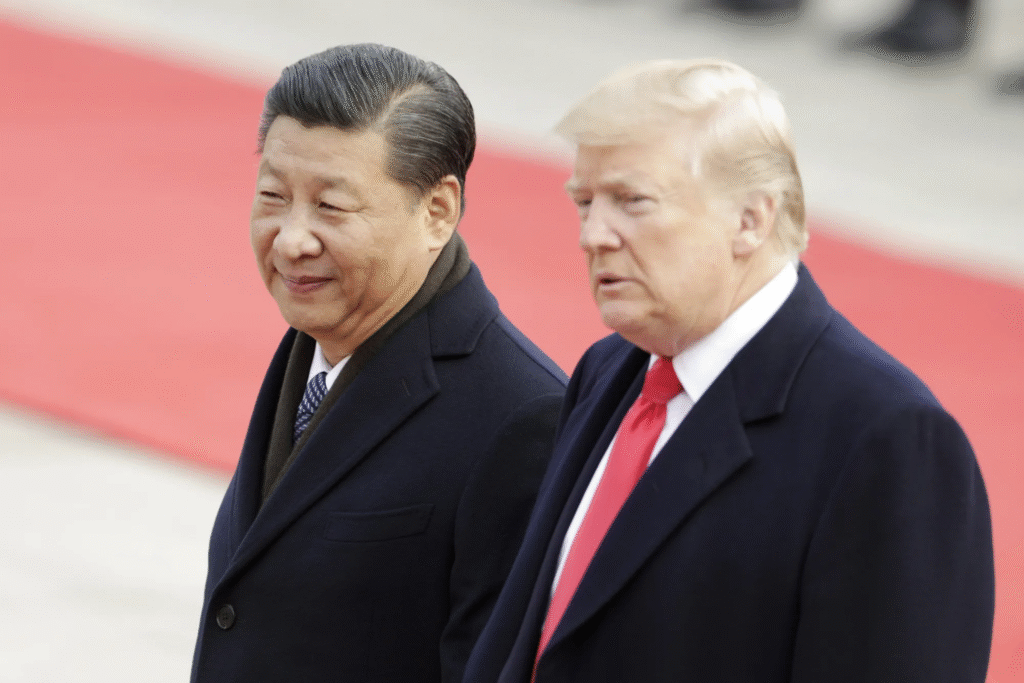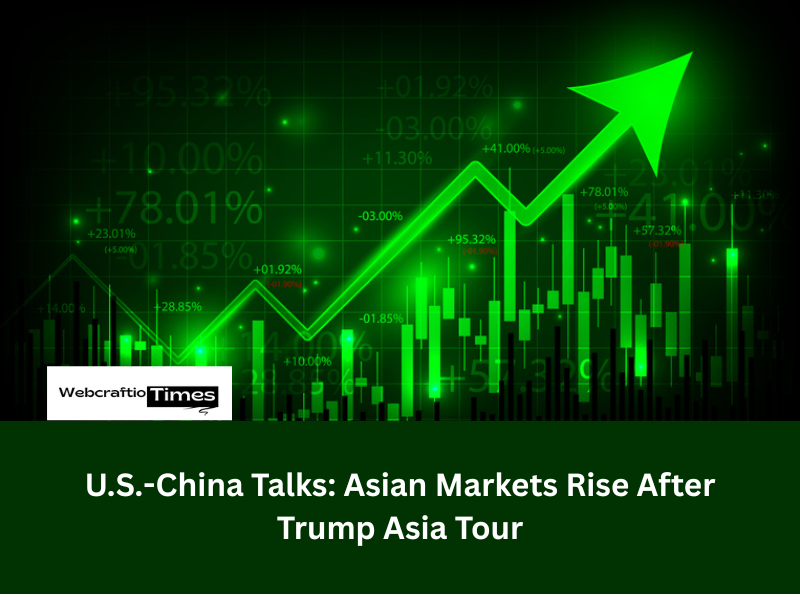Asian stock markets surged on Monday. Investors cheered a breakthrough in US-China trade negotiations. Officials announced a significant framework agreement. This agreement largely defused the immediate threat of a major trade war escalation. The positive sentiment was further amplified by President Donald Trump’s ongoing Asia tour. This tour highlights Washington’s renewed focus on regional trade and diplomacy.
Averting the Tariff Cliff: Market Relief
The markets’ strong reaction was a massive sigh of relief. Negotiators struck a preliminary deal over the weekend in Kuala Lumpur, Malaysia. Crucially, this agreement averted President Trump’s planned 100% tariffs on Chinese imports. Those tariffs were scheduled to take effect on November 1. This immediate crisis prevention boosted global investor confidence.
Stock exchanges across Asia responded instantly. Japan’s Nikkei 225 jumped over 2%. South Korea’s Kospi gained nearly 2%. Hong Kong’s Hang Seng Index climbed 1%. Shanghai’s Composite Index also rose significantly. This widespread rally showed the regional dependence on stable US-China trade relations.
US Treasury Secretary Scott Bessent confirmed the positive news. He stated the risk of the 100% tariff was “effectively off the table.” The de-escalation framework now paves the way for the two leaders to meet.
Important Deals and Contract Elements
The framework addresses two of the most volatile recent trade disputes. China agreed to a delay on its proposed rare earth export controls. These minerals are essential for high-tech industries. China currently controls over 90% of the world’s rare earth processing. The threatened restrictions had caused major supply chain fears. The delay, expected to last one year, offers critical time for global supply chains.
You May Read This: Peace in Ukraine?: Zelenskyy, Trump, Putin Budapest summit
The agreement also included a major win for American farmers. China is committed to renewing substantial purchases of US soybeans. Chinese Vice Premier He Lifeng led the talks for Beijing. He confirmed a “preliminary consensus” on multiple issues. These issues included tariffs, export controls, and fentanyl cooperation.
US Trade Representative Jamieson Greer said they found a “path forward.” He suggested this path would give the US better access to rare earths from China. It also aimed to balance the trade deficit with stronger US exports. This balanced result gave investors a reason for optimism.
Trump’s Asia Diplomacy and Regional Trade
President Trump’s current five-day Asia tour added to the positive market mood. He attended the ASEAN summit in Malaysia. There he oversaw a historic peace accord between Thailand and Cambodia. He also signed new trade and critical minerals deals with several Southeast Asian nations.
This active diplomacy projects an image of US engagement. It contrasts with previous periods of perceived isolation. Investors saw these deals as steps toward more resilient regional supply chains. The President expressed strong confidence about the larger China deal. “I think we’re going to have a deal with China,” he told reporters in Kuala Lumpur.
The high-stakes nature of the trip clearly drove the market. The success of the technical talks in Malaysia significantly reduced geopolitical uncertainty. That reduction in uncertainty fuels trading activity. It encourages investment in sectors sensitive to trade risks.
Looking Ahead: The Xi-Trump Summit
The trade framework now moves to the leaders’ desks. President Trump and President Xi Jinping are scheduled to meet this Thursday in South Korea. They will convene on the sidelines of the APEC summit. This meeting will be their first face-to-face since Trump’s return to office.

Investors anxiously await the final details. The summit outcome will determine if the current relief evolves into a lasting solution. Analysts warn the framework remains a tentative truce, not a full structural agreement. Key issues, such as intellectual property and state subsidies, still await resolution.
However, the fact that both sides are engaging in dialogue is highly significant. It indicates a mutual desire to avoid economic disaster. This renewed dialogue has given a strong boost to Asian and global financial markets. The markets bet on de-escalation prevailing over confrontation.
Conclusion
The new US-China framework immediately averted 100% tariffs. China agreed to delay rare earth controls and increase US soybean purchases. This critical progress, achieved during the Trump Asia Tour, propelled Asian markets sharply higher. Presidents Trump and Xi will finalize this tentative trade truce this week in South Korea.
Frequently Asked Questions (FAQs)
Q1. What is the most significant part of the new trade framework?
A. The framework prevents the US from imposing new 100% tariffs on Chinese imports. This averts a major, immediate escalation of the trade war.
Q2. Where and when did the negotiators meet?
A. Top US and Chinese officials met in Kuala Lumpur, Malaysia, over the weekend of October 25–26, 2025.
Q3. What did China concede in the talks?
A. China agreed to delay new export controls on rare earth minerals and to resume substantial purchases of US soybeans.
Q4. Why did Asian stock markets rally?
A. Markets rallied because the framework reduced geopolitical uncertainty. It also removed the threat of severe tariffs and supply chain disruption.
Q5. When do the presidents meet to finalize the deal?
A. President Trump and President Xi Jinping are scheduled to meet this Thursday, October 30, in South Korea at the APEC summit.
For More News & Updates : Visit Us



